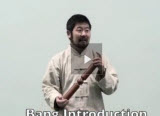I was recently looking through some old notes and came across Master Chen Zhonghua’s “New Theory on the Eight Methods.” It is also known as the eight techniques. I thought this might be of interest due to the recent discussion of the Eight Methods mentioned in Rion’s notes from the Cannon Fist workshop.
The conventional interpretation of the Eight Methods is as follows:
Peng = to ward off
Lu = to divert, to pull
Ji = to press
An = to push down
Cai = to pluck
Lie = to split
Zhou = to strike with the elbow
Kao = to bump
Master Chen’s New Theory on the Eight Methods (circa March, 2003):
Peng = to enlarge, to expand
Lu = to lengthen towards self.
Ji = to lengthen towards opponent, to make heavy (sink) and squeeze out space
An = to push to cause separation and disengagement
Cai = to break in the opponent’s end. (three ends: opponent, middle, self); to uproot through pulling with acceleration, creating a variation of speed in the opponent’s body (based on Lu)
Lie = to break in the middle (based on Lu)
Zhou = to twist so that two directions are simultaneously engaged
Kao = hitting with a large area of the body
*Peng is the basis for the other seven methods and is also the most difficult one to master. Taiji is the “Art of Peng.”



{ 4 comments… read them below or add one }
Thanks for refreshing my memory on this. I think when Master Chen described it to me (us) he mentioned that there was a lot of problems translating from one dialect to another and that things got twisted around a bit.
Thanks for sharing Todd, I know I have it written down in one of my many pages of workshop notes somewhere.
Yes Tim that is how it was explained to me too, incorrect translation and misinterpretation.
nice, thanks for sharing Todd. I have not seen this particular explanation before. As the vocabulary gets more precise so does our understanding.
Probably worth a while bumping this post up since Michael Koh Mentioned it recently in his quiz…
Got to do with plenty of dialects used in China and the interpretation could be misunderstood (henan dialect different from Beijing dialect?)